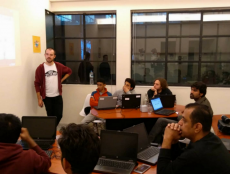
Articles
MOOCs, Coding Bootcamps, and Other Online Educators Display a Glaring Lack of Student Support Services
By Henry Kronk
October 26, 2017
Among MOOC providers and other online programs, disrupters tend to gush about job success rates, filling skills gaps, and the democratization of education.
But one subject is almost always left unspoken: student support.
As 2016, 58 million students were enrolled in a massive online open course (MOOC). Millions of others participated in some other kind of eLearning, non-degree program or bootcamp.
At the vast majority of these institutions, support services come in the form of a Help page, a Contact Us portal, or worse, an FAQ.
At Udemy, which currently is training over 15 million professionals, the support page offers frequently asked questions and topics to search for help, such as “Getting Started” and “Course Taking.”
At Bloc, an online coding bootcamp that accepts 100% of their applicants, students pay as much as $19,500 in tuition. In return, Bloc offers Career Support to help graduating students land a job.
What we know
Whether it’s mental health, financial support, IT troubles, course requirements, or just figuring out how integrate education into daily life, student support services are indispensable in any higher learning institution.

But by and large, most research regarding support services focuses on traditional brick-and-mortar college campuses and targets what has become known as “traditional students.” These are the 18-24-year-olds who may have never held a job or left home for any significant amount of time before coming to study.
Beyond the fact that most students today are non-traditional, little is known about the needs of online learners and how it affects their education.
Studies tend to focus on individual programs, which can vary widely. One exception was conducted by Lin Muilenburg and Zane Berge all the way back in 2005. (Their findings have since been confirmed by several independent research teams.) The authors looked at several different institutions and found that some 52% of students who dropped out of an online program did so because they lacked some kind of administrative support.
Need varies by demographic
When it comes to brick-and-mortar institutions, many studies have found that student support services, especially for certain populations, is tantamount to the quality of education itself in terms of teaching effectively.
Another study, which focused on demographic breakdowns, found that 40% of white students on campus felt overwhelmed most or all of the time. That number was over 50% among blacks and Hispanic students.
These findings are especially concerning for online education because, among accredited online degrees, U.S. minority populations by far make up the majority of the student body.
There is no typical online learner. People tend to choose online programs because they can improve their knowledge or employment outlook on their own time. They can continue their role as parent or breadwinner or caregiver, all while studying. It seems likely that online learners could benefit from support services to a greater degree than “traditional” students.
It doesn’t have to be like this
There is no reason that online learners shouldn’t have similar access to student support services. While they may be separated from their instructors by thousands of miles, myriad options exist to bridge the gap. Email, live chat, and especially live interactive video streaming can allow counselors to reach students.
But in online learning programs across the board, live interactive video streaming is shockingly rare. Support services aside, even most lectures have been recorded in advance and foster little social interaction among students.
According to Professor Scott Martin, who cofounded Scriyb, a live video streaming platform, there are two reasons for this.
“One, education institutions are trapped in their legacy LMS (learning management system) license deals, as many vendors control so much institutional, student, and assessment data, schools and colleges are terrified of the heavy lift [to adopt new technology].”
“Two, many LMS vendors are just now moving to the cloud, truly required for streaming.”
But even with the availability of platforms like Scriyb, it seems unlikely that the most successful for-profit online educators will incorporate student services any time soon. Their model is working. If nothing’s broken, why would anyone fix it?









“Your style is so unique in comparison to other people I’ve read
stuff from. Thanks for posting when you have the opportunity,
Guess I will just bookmark this page.”